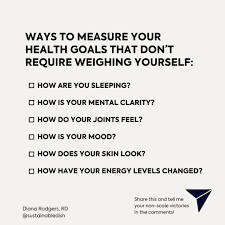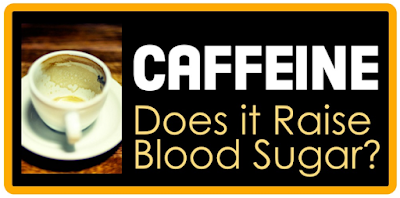Snacks – should kids have snacks? Do snacks ruin a kid’s appetite? Are snacks healthy? So often I hear that kids shouldn’t have snacks. A friend recently stated her kids are always hungry after school, but they don’t know if they should get snacks or what snacks to give them. All kids not only should have snacks but actually need snacks. Kids, especially younger kids, have very small stomachs. They can’t eat large amounts of food at meals so they get hungry between meals.
USDA sets a meal pattern for child care centers and this meal plan has a morning snack and an afternoon snack. School-age kids should have an after-school or afternoon snack every day. After-school snacks are a great opportunity to provide kids with nourishing options that keep their energy levels up. But this snack shouldn’t be gorging on junk food. What are some guidelines for healthy snacks and what are some snacks kids can make for themselves? And, as kids help make a snack, you can use making snacks to teach some math, colors, and shapes.
What are some guidelines for healthy snacks for kids?
- Fruits and vegetables: A great way to get your kids to eat more fruits and veggies is to serve them at snack time.
- Remember whole grains: Many kids today get no whole grains in their day. There are some creative ways to sneak whole grains into a snack. Oatmeal cookies, whole grain Goldfish crackers, whole grain pretzels. A bowl of any General Mills’ cereal is a great snack for a kid.
- Protein: Kids are hungry at snack time. Protein helps fill them up. Think cheese, yogurt, hummus. Flavored milk, like real chocolate milk is a great treat for snack time. Yes, some sugar in chocolate milk but kids will drink it and it will add some calcium, vitamin D and a good quality protein to their day.
What are some healthy and tasty snack ideas for kids?
When your kids get home from school and needs an afternoon snack, what are some snacks they can make themselves or help make?
- Ants on a log is a well-known favorite for kids – easy to make, just celery – you can have some celery already cut up in 3 to 4-inch sticks and ready for this snack, peanut butter, and raisins and maybe some nuts (if your child has no nut allergies). For variety, try some nut butters, use trail mix for the topping, or let your child sprinkle some of their favorite cereal on their “logs”. To help your kid learn math, have them measure out 2 teaspoons of peanut butter (or nut butter) and 10 raisins. Or, make some of the fun variations and use cream cheese instead of peanut butter and vary the toppings.
- Yogurt and berry parfait – let them choose the berries they like. Berries can be fresh or frozen. Your child can make a parfait of yogurt, berries and a topping of granola or their favorite General Mills or other healthy cereal. Some chopped nuts can add some crunch and more protein.
- Fresh Veggies with Homemade Veggie Dip can be a good snack but may not have enough calories if you only provide a low-calorie dip.
- Carrots and fat-free Ranch dressing are not really a good snack as this won’t provide your child with enough calories. Carrots and hummus as a dip would be a much wiser and healthier choice. For younger kids, have some veggies (baby carrots, cut up: cauliflower, broccoli, radishes, or some cucumber slices) cut up in the fridge and let your child choose what veggies they want.
- Prepare a quick dip using Greek yogurt and common spices (recipe at: Veggie Dip) Pair with carrot sticks, cucumber slices, bell pepper strips, or cherry tomatoes.
- Ingredients – banana slices, grapes (cut in half for small kids so they don’t choke), strawberries, whole grain bread slices, peanut butter, jelly and some kebob skewer sticks.
- Spread peanut butter on a slice of bread. Spread jelly on a different bread slice. Put together.
- Cut the PBJ sandwich into little, one-inch circles.
- Cut tops off strawberry but leave intact for the caterpillar “head”.
- Assemble your caterpillar on the kebob: Bread circle, banana, grape, bread circle, banana, grape, then a strawberry top. For caterpillar “eyes”, either use “sugar eyes” used in cake decorating, or pieces of banana or some chocolate chips. Vary the fruit – use blueberries or other fruit on your kebob.
- Microwave Pizza Pitas
- Whole grain pita – rub some olive oil on the pita pocket, cover pita with some spaghetti sauce, top with grated cheese and maybe some pepperoni slices. Add a pinch of garlic salt or Italian seasoning. A minute or less in the microwave should melt the cheese. Or use some whole grain English Muffins for your “pizza”.
- Apple “cookies”. Core an apple for your kid(s). Slice the apple into round slices (like a doughnut with a hole). Have your child put peanut butter or a nut butter on the apple slices and sprinkle with some chocolate chips. Serve with a glass of real cow’s milk.
- Trail mix
· Combine nuts, seeds, dried fruit, and a few dark chocolate chips for a satisfying and portable snack
- Chocolate milk
· Kids love chocolate milk and you can make chocolate milk without added sugar. Be sure to use real cow’s milk for the protein and other nutrients real milk provides. See recipe at Homemade Chocolate Milk. An alternative is Fa!rlife chocolate milk. Yes, it has some added sugar but less than most chocolate milks and kids will drink it. Also, a good way to add healthy protein, calcium, and vitamin D to their day. (See: Is chocolate milk good for you? )
Conclusion: What fun snacks can you help your kids make this week? If a child helps make the snack, they are more likely to eat it. Remember to choose snacks that include nutrients like fiber, protein, and vitamins while minimizing added sugar, salt, and artificial ingredients. These options will keep your little ones satisfied and energized after a long day at school. Let your kids enjoy some healthy after-school snacks and help them make snack time fun. For more information see: Healthy After-School Snacks for Kids )
Sources: USDA , Goldfish , snack , help , Pinterest, Veggie Dip , video , Homemade Chocolate Milk , Fa!rlife chocolate milk , Is chocolate milk good for you? , Healthy After-School Snacks for Kids Image Sources: PBJ and fruit kabobs , Secret to healthy snacks , Silly animal toast

.jpg)













.png)